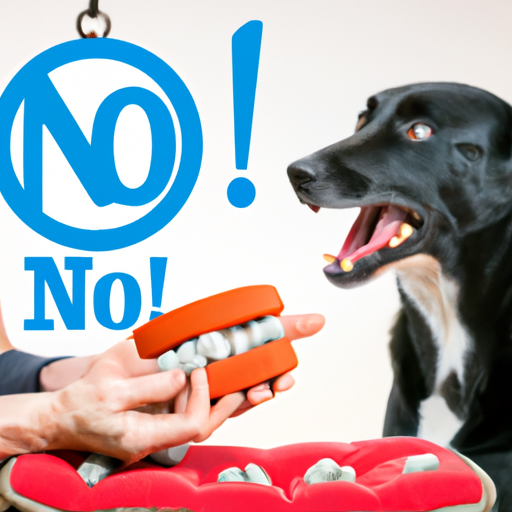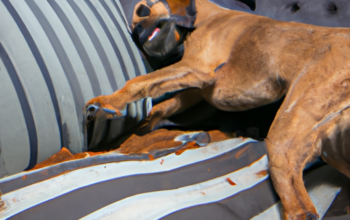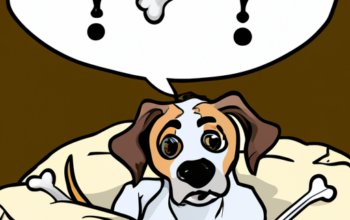Did you know that around 4.5 million people in the U.S. are bitten by dogs each year? If your furry friend is part of this statistic, it’s crucial to understand what’s causing this behavior and learn how to curb it effectively.
Biting can be a result of various factors, from teething in puppies to anxiety or aggression in older dogs. By understanding the reasons behind your canine’s biting, you’ll be better equipped to manage and rectify this issue using effective techniques like redirection and positive reinforcement.
Additionally, training your dog to respond to commands can also discourage such actions. This article will guide you on how to get your dog to stop biting, ensuring a safer environment for both you and your pet while strengthening the bond between you two.
With patience, consistency, and knowledge, saying goodbye to unwanted nipping could be closer than you think!
Understanding the Reasons Behind Your Canine’s Behavior
Let’s dive a bit deeper to understand why your furry friend might be resorting to biting, shall we? Grasping dog psychology is crucial.
Dogs bite for several reasons. It can be a form of communication or defense when they feel threatened, scared, or anxious. Puppies often bite during playtime as they explore the world around them and learn their behavioral patterns.
Understanding these innate behaviors can provide clues on how to address biting issues. For instance, if your pooch bites due to fear, it’s essential to find out what triggers this anxiety and provide reassurance instead of punishment. Training techniques that encourage positive behavior can also help transform aggressive tendencies into more acceptable actions.
Remember, patience and consistency are key in resolving any canine behavioral issue.
Redirection and Positive Reinforcement Techniques
Ever wondered how you can turn your pup’s unwanted nipping into playful, harmless fun using redirection and positive reinforcement techniques? It starts with understanding that biting is part of a dog’s natural behavior. However, it can be controlled with the right tactics.
-
Toy Substitution: Once your dog begins to bite, redirect their attention by giving them an appropriate chew toy or bone.
-
Reward Systems: Praise and treat your dog when they choose the toy over your hand. This positive reinforcement encourages good behavior.
-
Training Sessions: Regular training helps establish boundaries. Teach commands like ‘stop’ or ‘no bite’.
-
Bite Inhibition: Allow gentle nibbles but communicate pain through a yelp sound if it gets too hard. This teaches bite control.
With patience and consistency, you’ll turn those painful bites into puppy kisses in no time!
Training Your Pet to Respond to Commands
Are you ready to take your pet’s behavior to the next level by mastering command responses? Training your dog to respond to commands is a vital part of curbing biting behaviors.
Through command mastery, you can easily communicate with your pooch and guide their actions. During interactive playtime, employ verbal cues like ‘Sit’, ‘Stay’, or ‘No Bite’. Implementing these during fun activities helps them associate obedience with positivity.
Here’s a simple table illustrating some basic commands:
| Command | Purpose | Interactive Playtime Implementation |
|---|---|---|
| Sit | Calm down and show respect | Use when playing fetch |
| Stay | Prevent rushing or chasing | Use before giving toys |
| No Bite | Stop biting immediately | Use when they nibble on toys |
Remember, consistency is key in training. Reward successes promptly for better retention!
Dealing with Teething in Puppies
Just when you think you’ve mastered the art of command training, your pup’s teething phase might throw a wrench in the works. Dealing with this can be challenging as biting is an instinctive behavior during this period.
One way to manage this natural transition is by making puppy diet adjustments. Adding moist foods to their meal can alleviate discomfort caused by sore gums. Moreover, providing chilled carrot sticks or ice cubes can provide some much-needed relief.
Equally important is focusing on teething toys selection. Choose durable items that are safe and designed for gnawing; these not only satisfy their urge to bite but also help in developing strong jaws and teeth. Remember, patience and consistency are key during your fur baby’s teething phase.
Managing Aggression and Anxiety in Your Dog
Navigating your pup’s bouts of aggression and anxiety can feel like walking a tightrope, but with the right approach, you’ll find it’s not an impossible task. Here are some tips to keep in mind:
-
Always consult with a vet or animal behaviorist for professional advice. Canine medications might be suggested as part of the treatment plan.
-
Therapy dog benefits include reducing stress and anxiety. Consider training your dog to be one for mutual help.
-
Regular exercise can help burn off excess energy that may contribute to aggressive behavior.
-
Establish clear boundaries and use positive reinforcement to promote good behavior.
By understanding the causes behind these behaviors, you can start taking steps towards managing them effectively.
Frequently Asked Questions
What kind of toys or chew treats can I offer my dog to prevent biting?
Try offering your dog interactive feeding toys or durable chew treats. Implement a toy rotation system to retain their interest and discourage destructive biting. These options help satisfy the natural urge to chew in a safe manner.
How can I use dietary changes to manage my dog’s aggressive behavior?
Ironically, your dog’s aggression might be due to food allergies. Addressing these can greatly impact their behavior. Maintaining a balanced diet is crucial; it regulates mood and reduces irritability. So, don’t dismiss dietary changes!
Are there any specific breeds more prone to biting, and how can I manage it?
Certain breeds may show more biting tendencies. To manage this, understanding your dog’s temperament is key. Implement bite inhibition training early on to help them learn appropriate behavior and decrease aggressive actions.
How does neutering or spaying affect a dog’s biting behavior?
Neutering or spaying can reduce your dog’s aggression, potentially lessening biting triggers. It’s not a surefire solution, though. You’ll need to combine this with proper training techniques for the most effective results.
Can certain illnesses or health conditions cause my dog to bite more frequently?
Yes, certain health conditions can cause increased biting in dogs. This is often due to pain induced aggression or psychological factors. If your dog’s behavior changes suddenly, it’s best to consult a vet immediately.
Conclusion
So, you’ve learned how to manage your dog’s biting habits, whether it’s due to teething, anxiety, or just playfulness. Isn’t it great knowing you can positively influence their behavior?
Remember, patience and consistency are the keys. Always reward good behavior and redirect when they bite. You’re on the right path to having a well-behaved canine friend.



